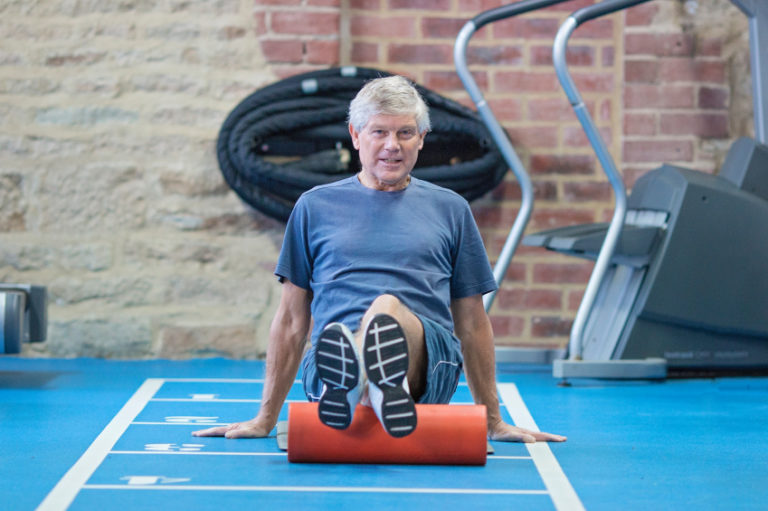It doesn’t matter how often you exercise, nothing feels better than a muscle massage after a long, tough workout. If you’re about to head into your next workout and you feel a little stiff in your legs or arms, a muscle massage can also help loosen up the body and get the blood flowing. For many, having a professional massage can be expensive, especially if you’re getting them multiple times a week. This is where self massaging comes into play. It’s easy, economical, and can be done no matter where you are.
Foam rolling has increased in popularity and has been used by athletes across all sports and can now be found in workout gyms, CrossFit gyms, home gyms, and even physical therapy clinics. The use of the foam roller creates a massage experience that muscles can appreciate and has been shown to have a direct impact in performance both pre and post workout. All muscle tissue is surrounded by connective tissue known as fascia, and foam rolling helps ease and release tension of the fascia. When you overtrain, do a workout improperly, or suffer trauma to a particular muscle, muscle soreness can occur. Using the foam roller to massage this soreness helps relieve the pain.
Here are the top 5 foam rolling tips that we hope you will take into consideration, and talk to your physical therapist about rolling if you need further information and guidance.
1. Select the Correct Roller
Rollers will come in all shapes and sizes, and will vary in firmness. It’s vital that as a beginner you select a roller that is softer and does not have anything fancy protruding from it. Easing into foam rolling is key and as you get more comfortable with the process it’s good to explore what other foam rollers exist and try some out. Now foam rolling may not be great for every body part, which is why it’s important to speak to a professional about rolling to ensure that you are doing it properly, that you’re selecting the right roller for your body, and that you are feeling better after using it, not hurting more.
2. Roll Slowly
There may be some discomfort from a tight muscle that’s being rolled, but in order to heal properly, be sure to roll over the area slowly. Imaging rolling dough with a roller- if you go to fast the dough does not spread, it just sort of moves around and there’s no progress. But a slow deliberate roll pushes the dough out and eventually you get the size you’re looking for. Take your time as you roll the muscle and give the roller time to do its job.
3. Avoid Joints and Prominent Boney Surfaces
The idea of foam rolling is to heal, not to cause further injury. Rolling across a joint can force the joint to hyperextend. Avoid this at all costs and if you’re having trouble finding a way to foam roll around your joint, speak to your physical therapist for guidance. Rolling over prominent or superficial bones can irritate your body as well.
4. Repeat, Repeat, Repeat
As in all things, consistency is key. Repeat foam rolling and the experience will become less painful as the muscle starts to relax. There are benefits at the end of it all, just be patient.
5. Relax and Breathe
It’s natural that in moments of pain we tend to hold our breath and tighten up. When you foam roll, the pain and discomfort may cause you to tighten up, but keep relaxed, and remember to keep breathing. Tightening up the muscles you are working on will only delay progress. Instead focus on keeping loose and the rest will fall into place.
Not sure if you need physical therapy? Do you want to speak to someone about pain you’re experiencing and guidance on next steps to get healthy? Call us at (210) 888-1278 or visit one of our clinics to learn more about our FREE* Pain Relief Assessments. We are conveniently located all around San Antonio and offer extended hours every day of the week. Our goal is to get you healthy for life!





